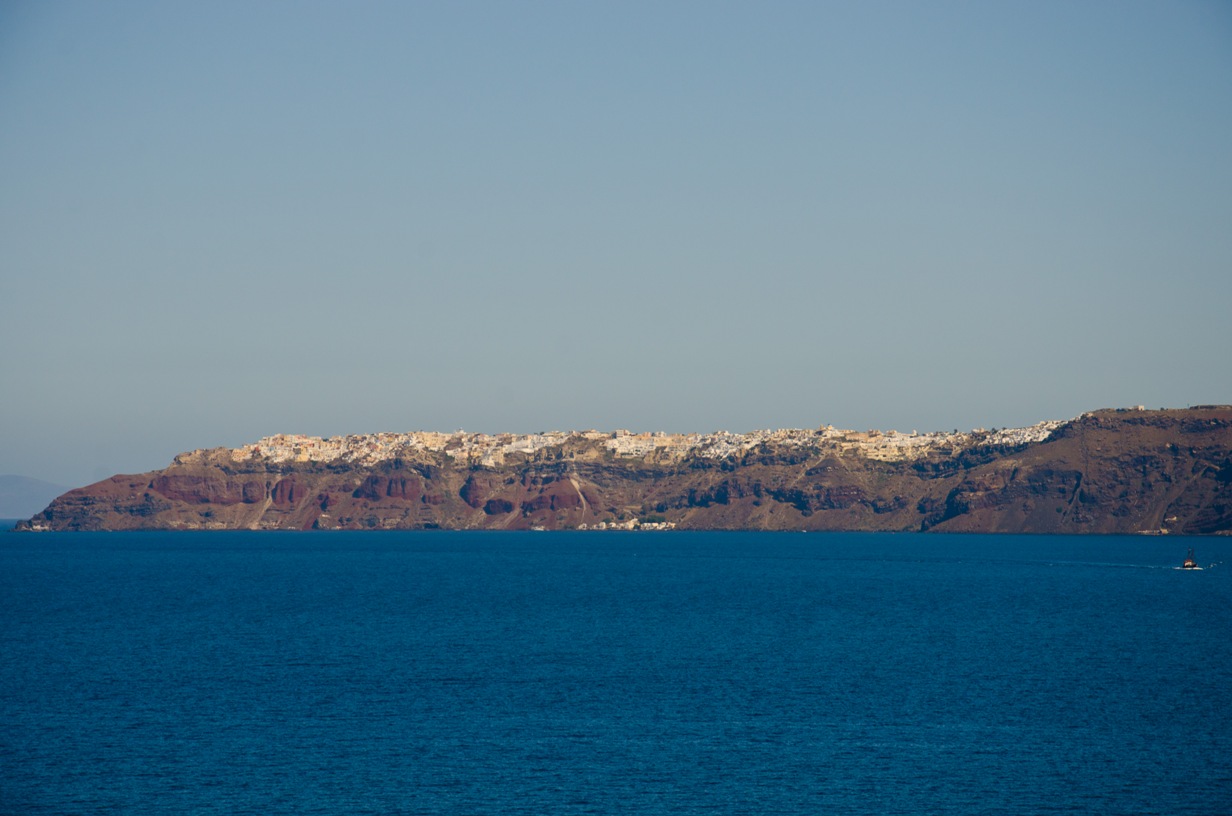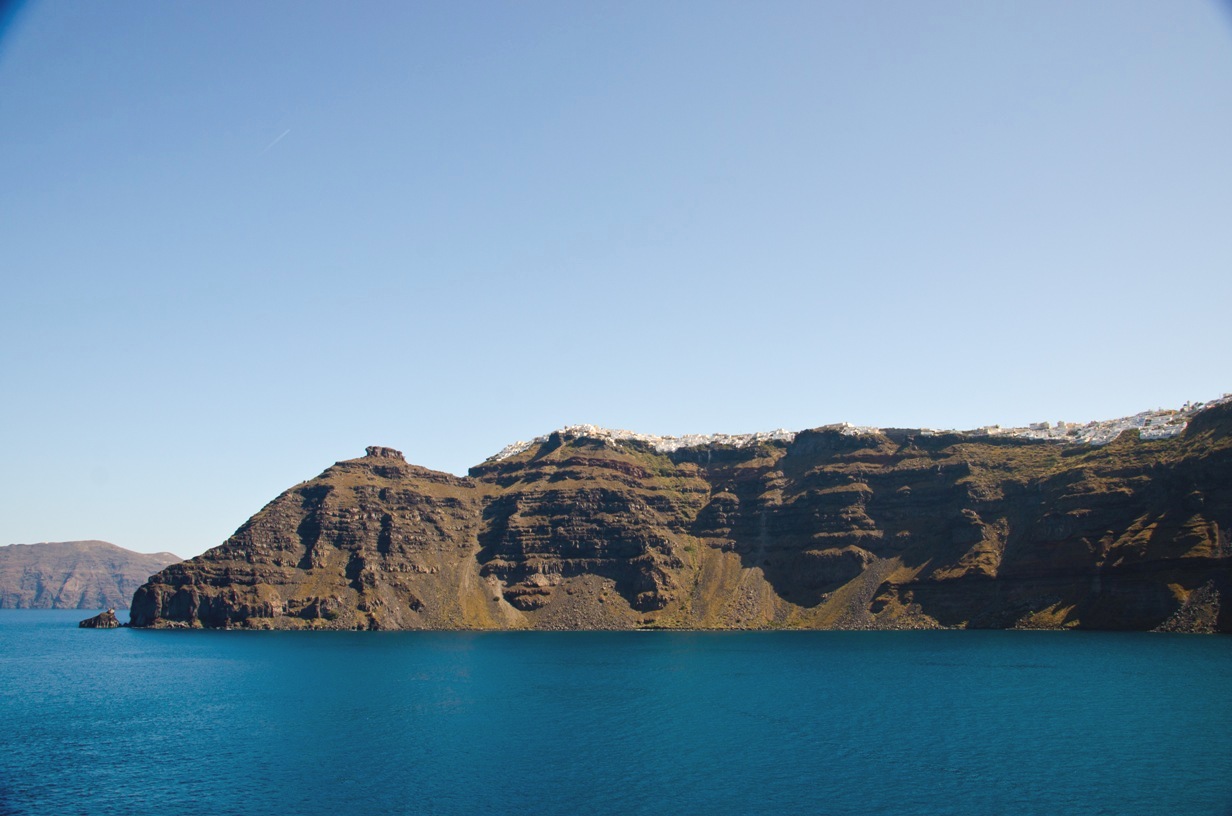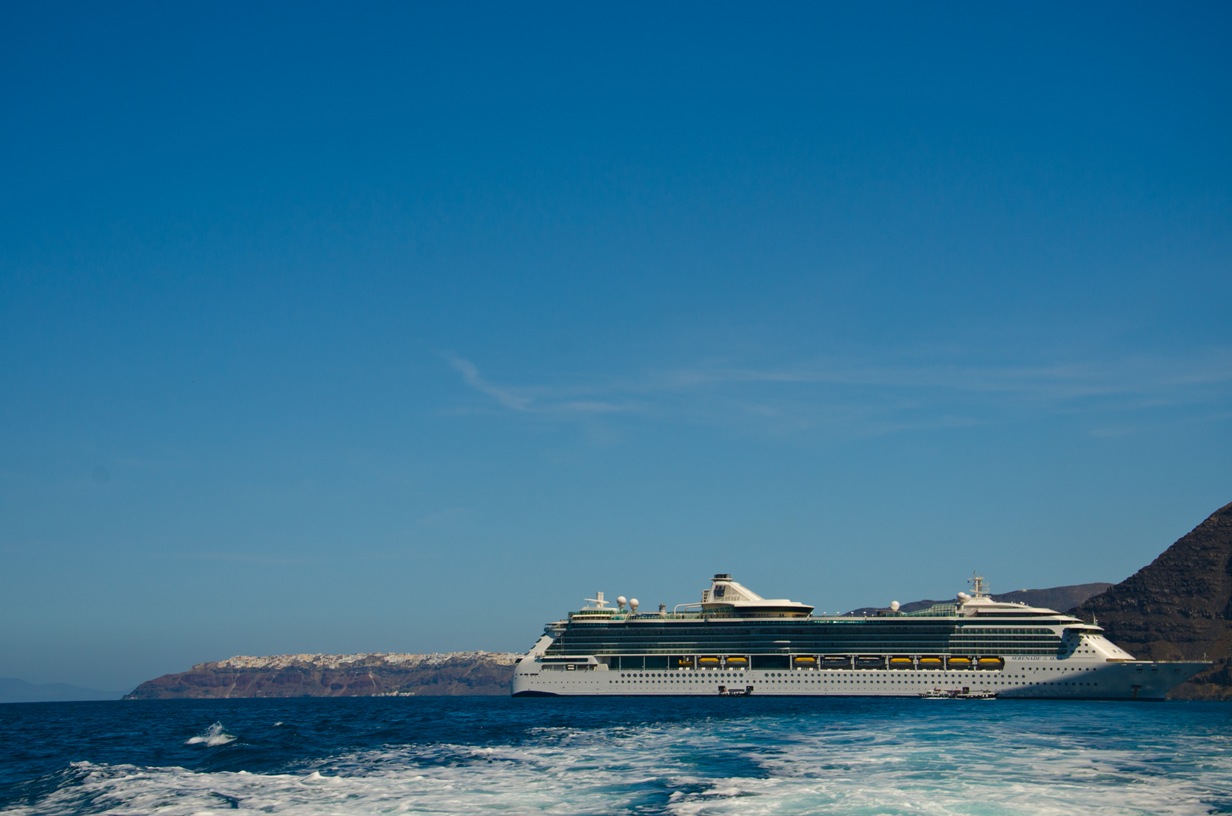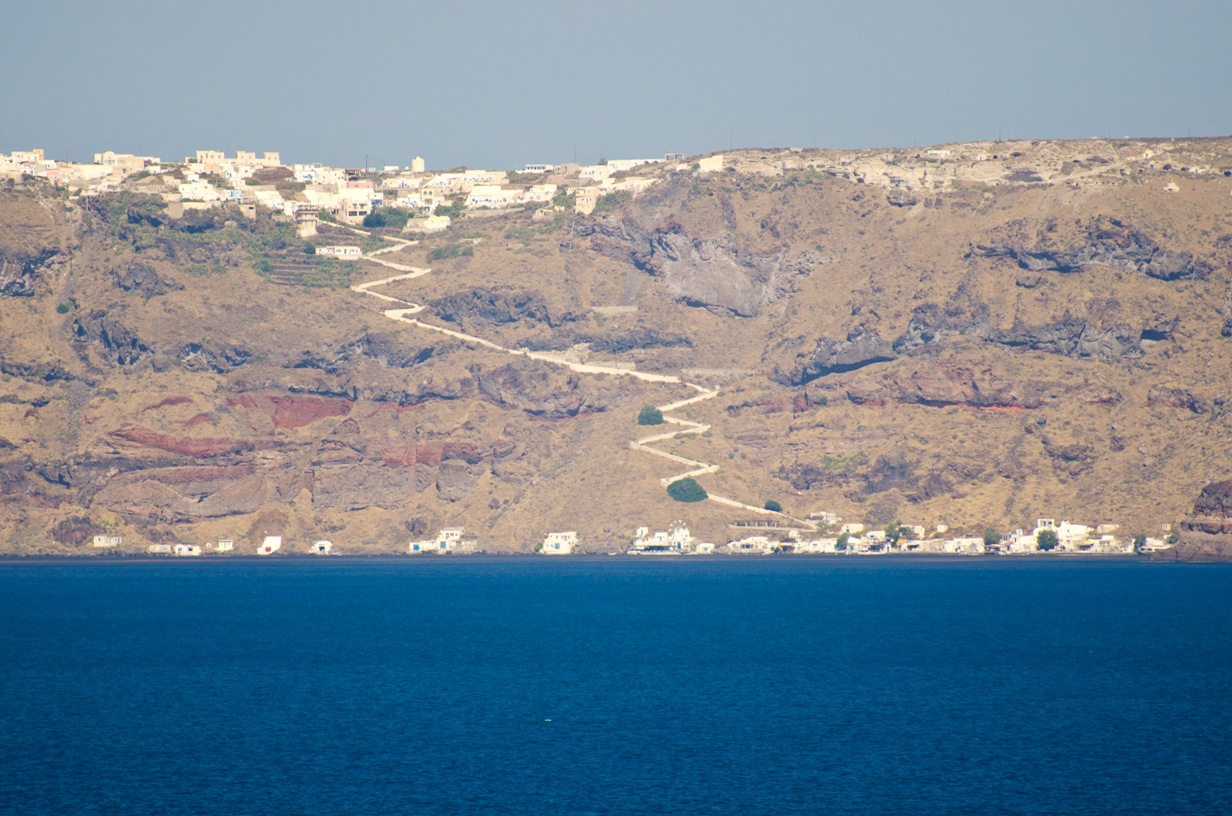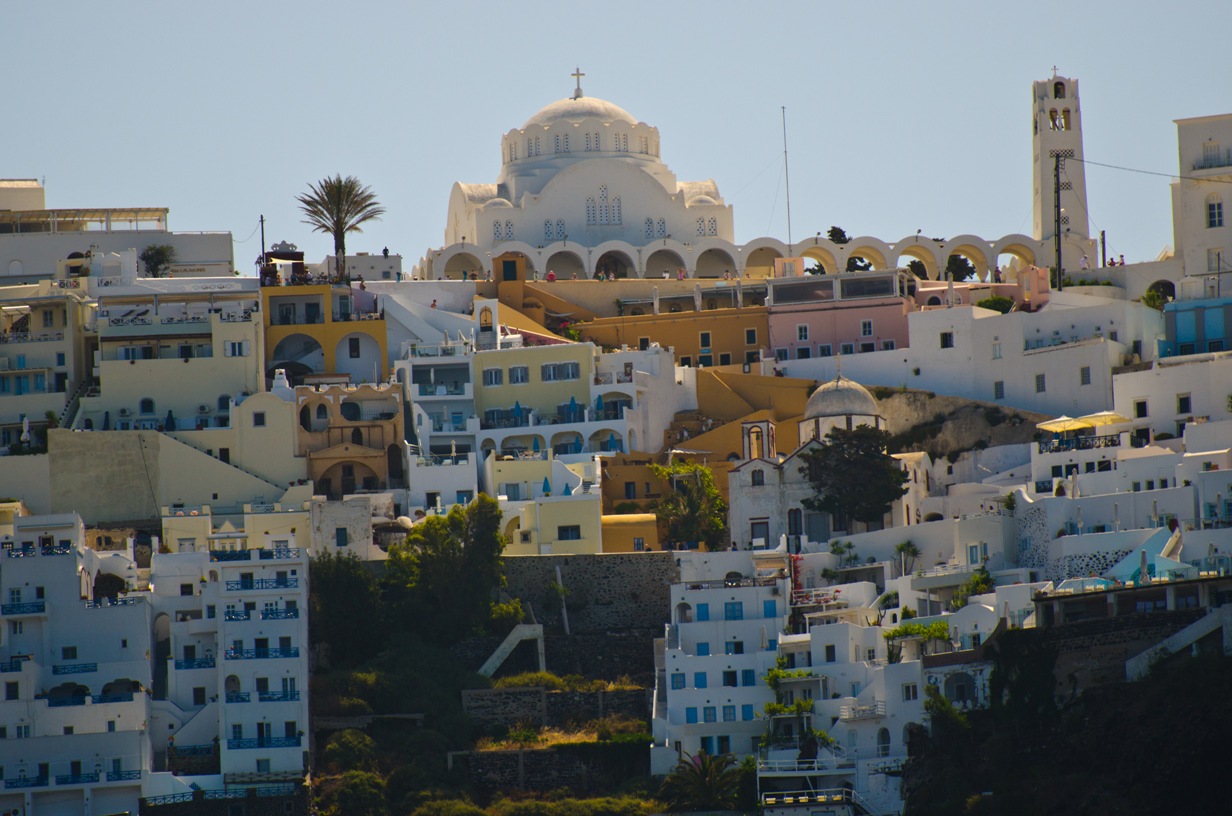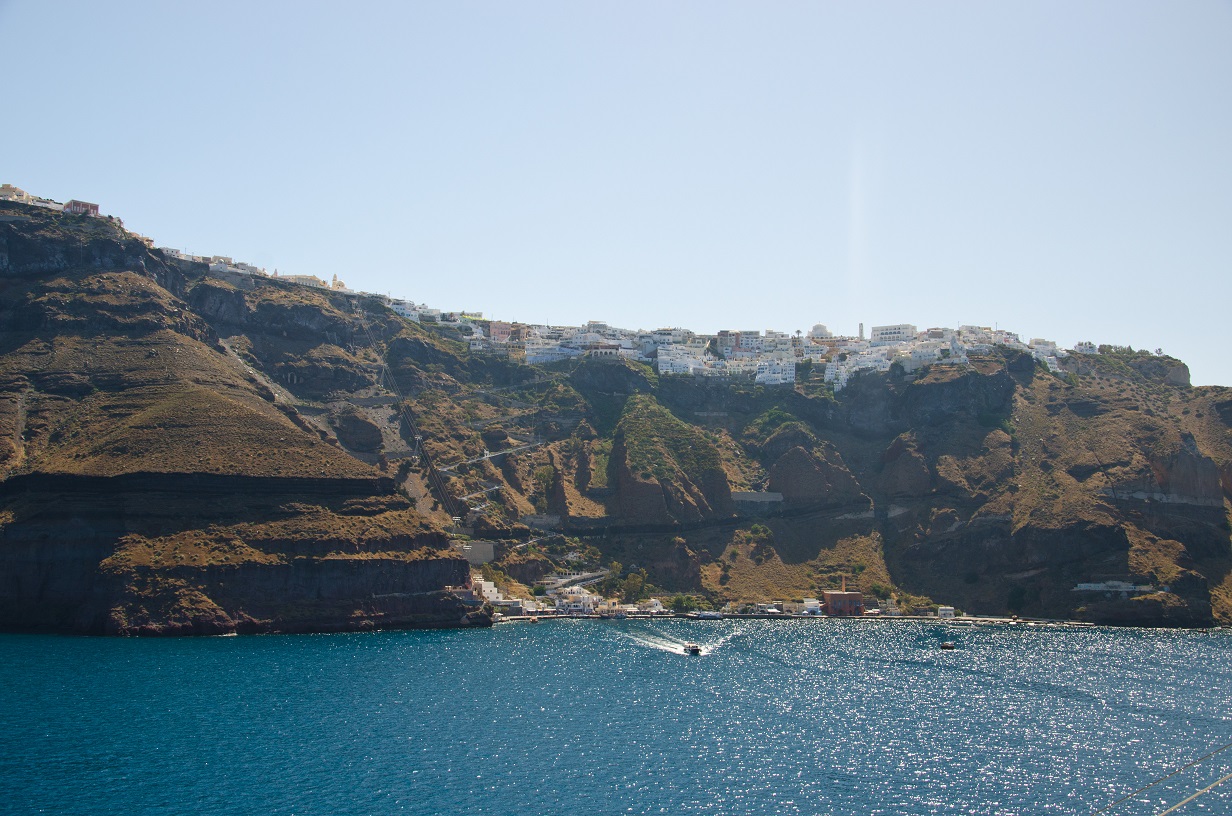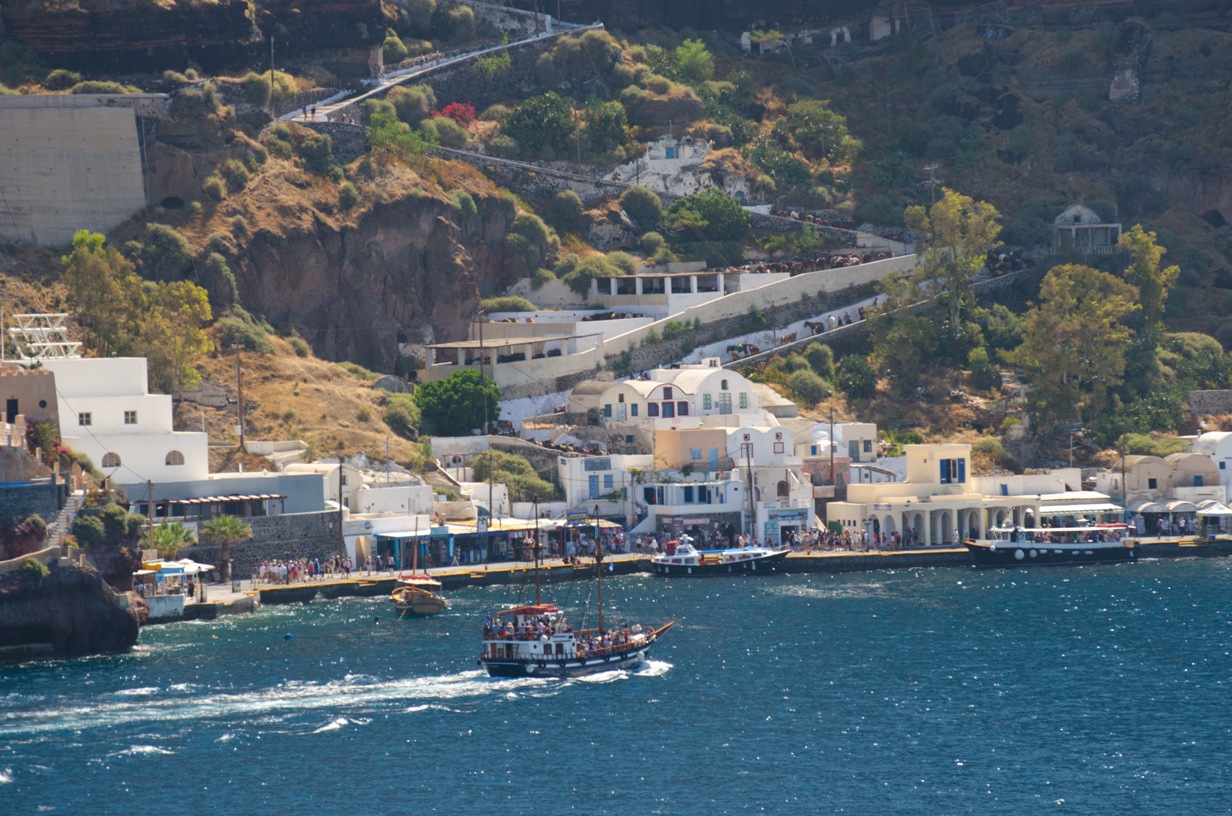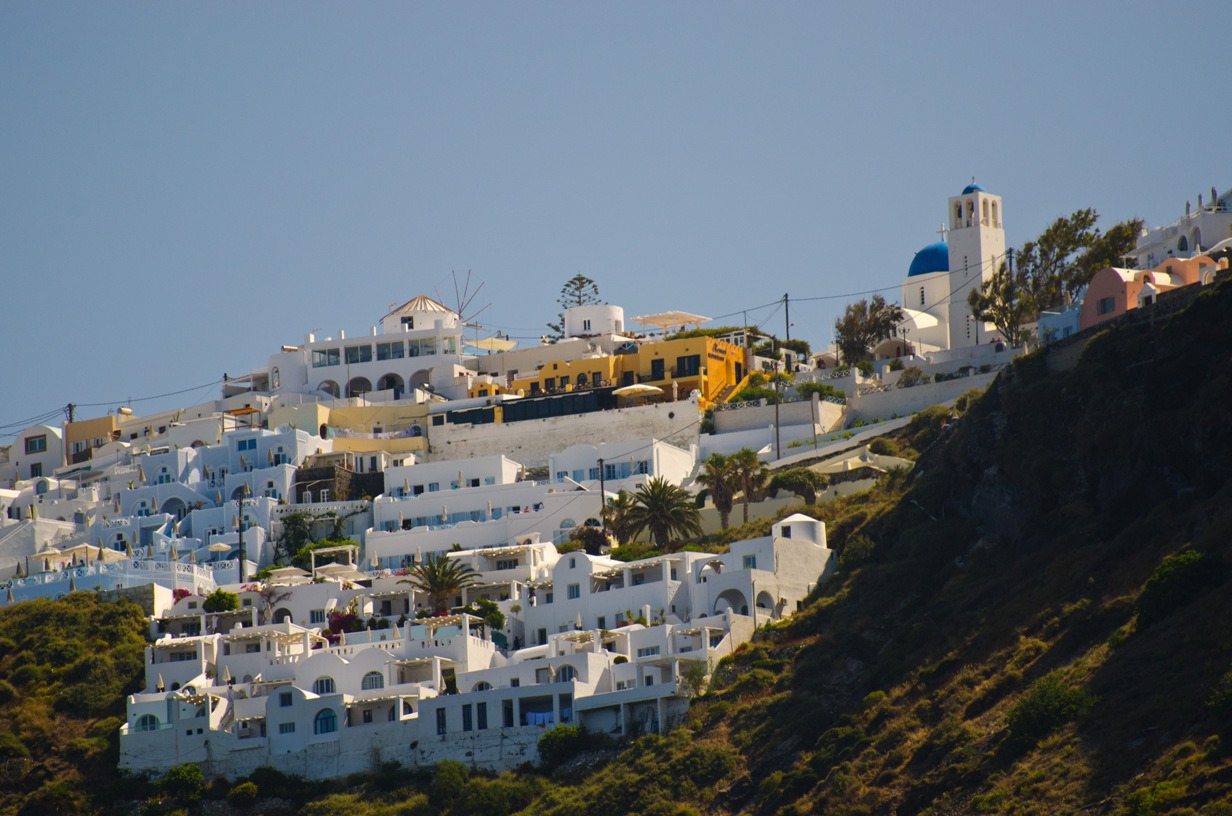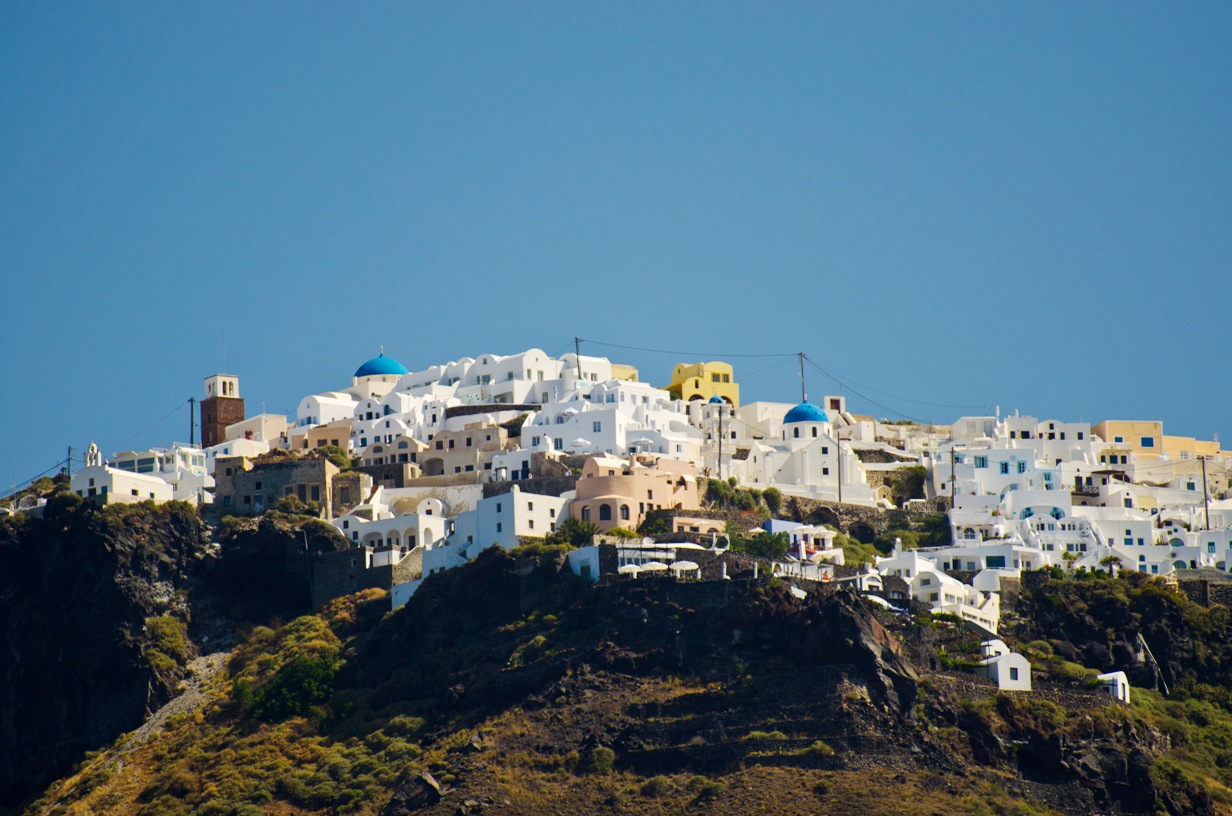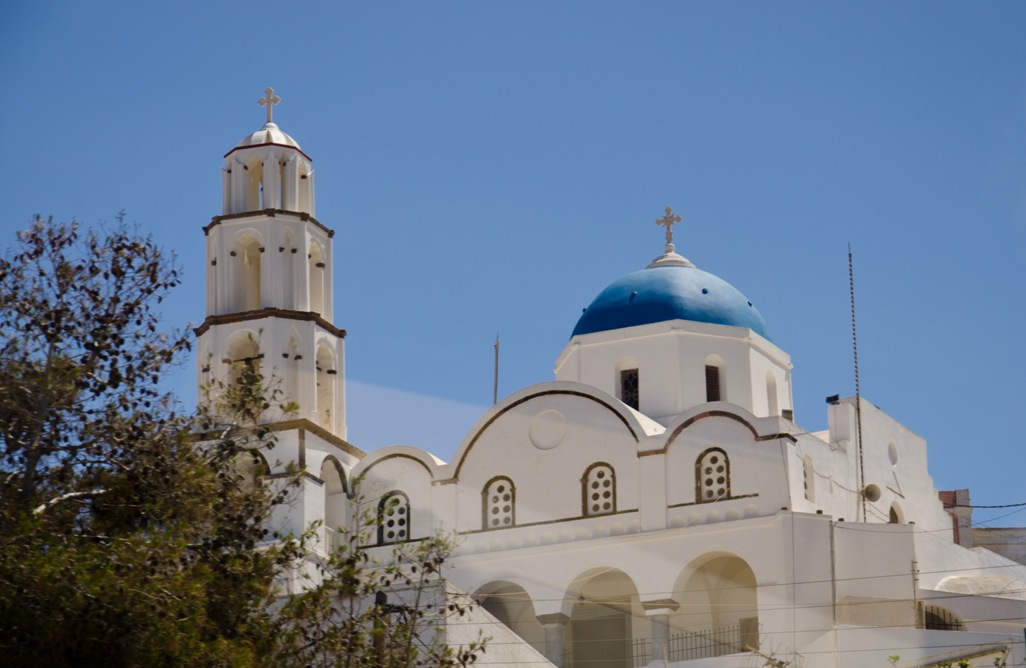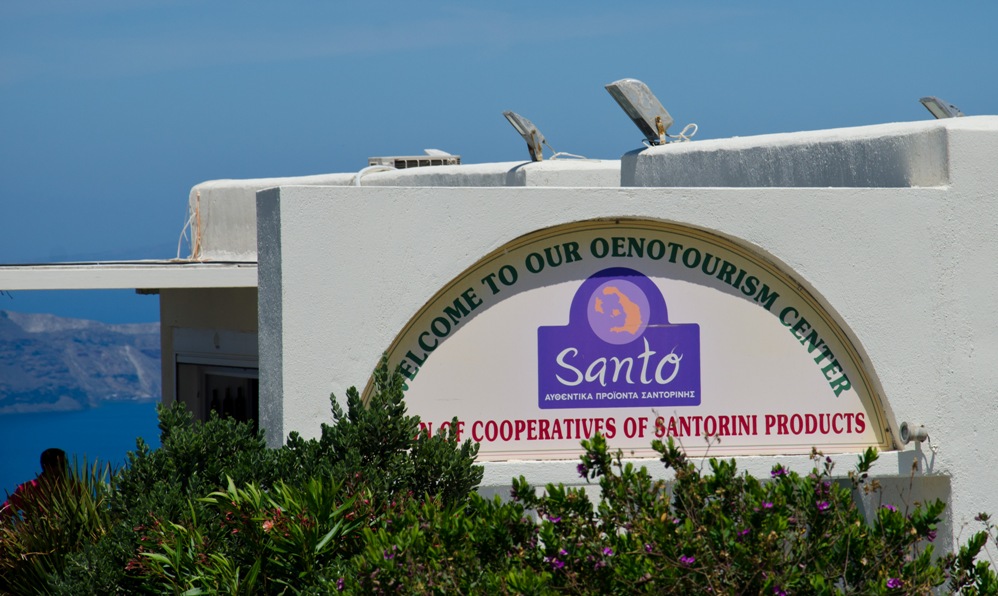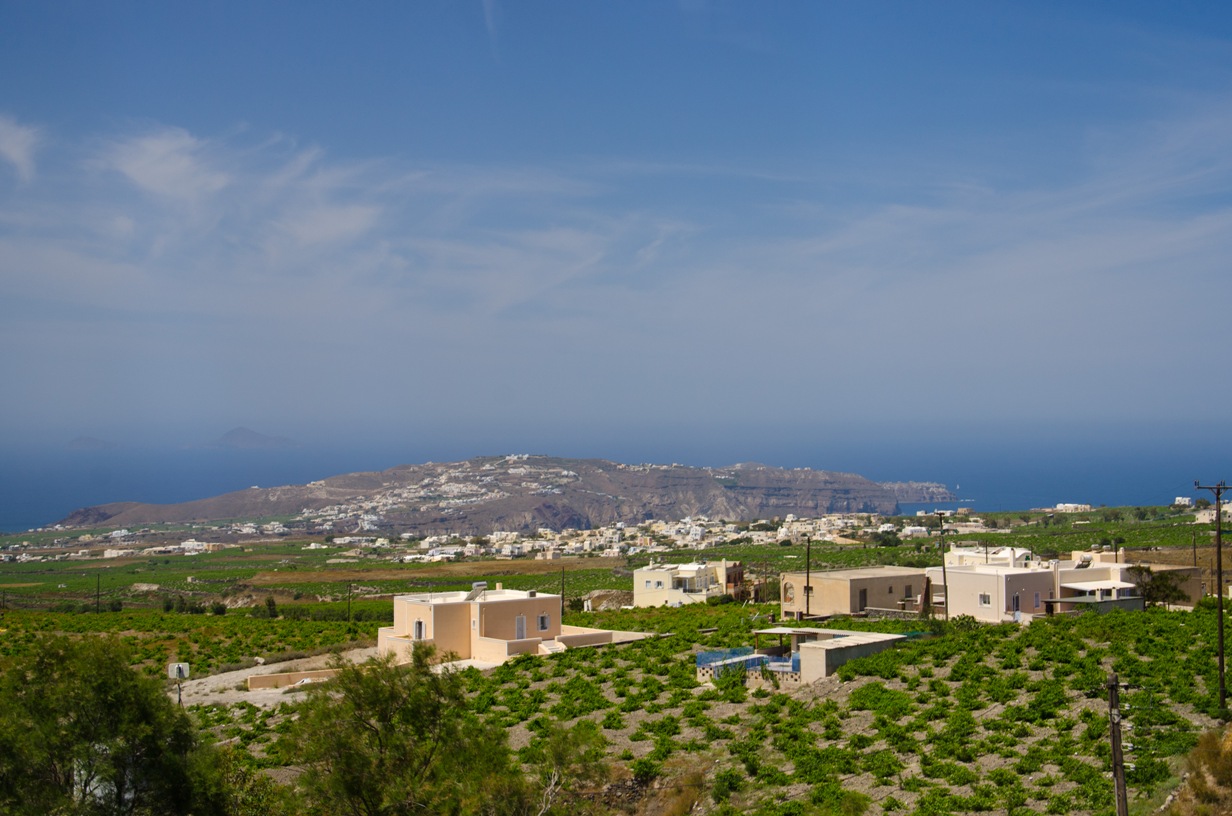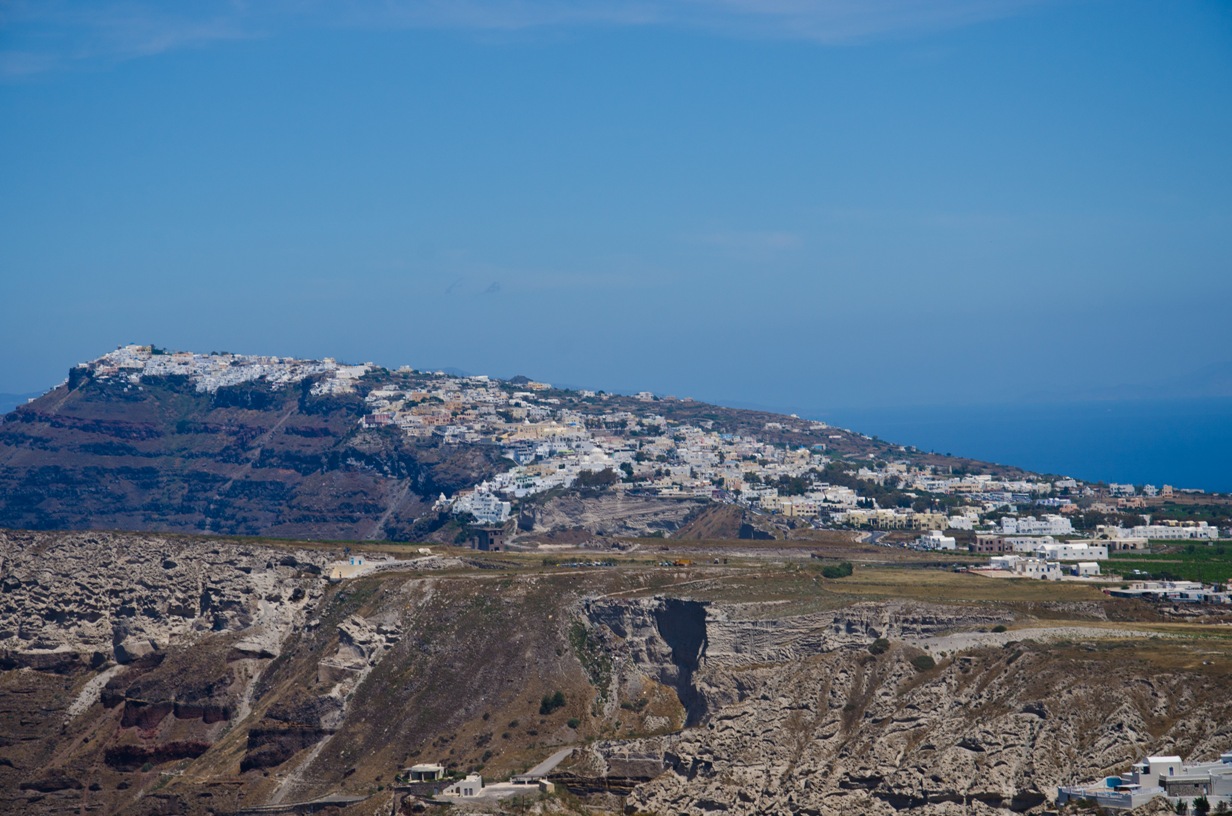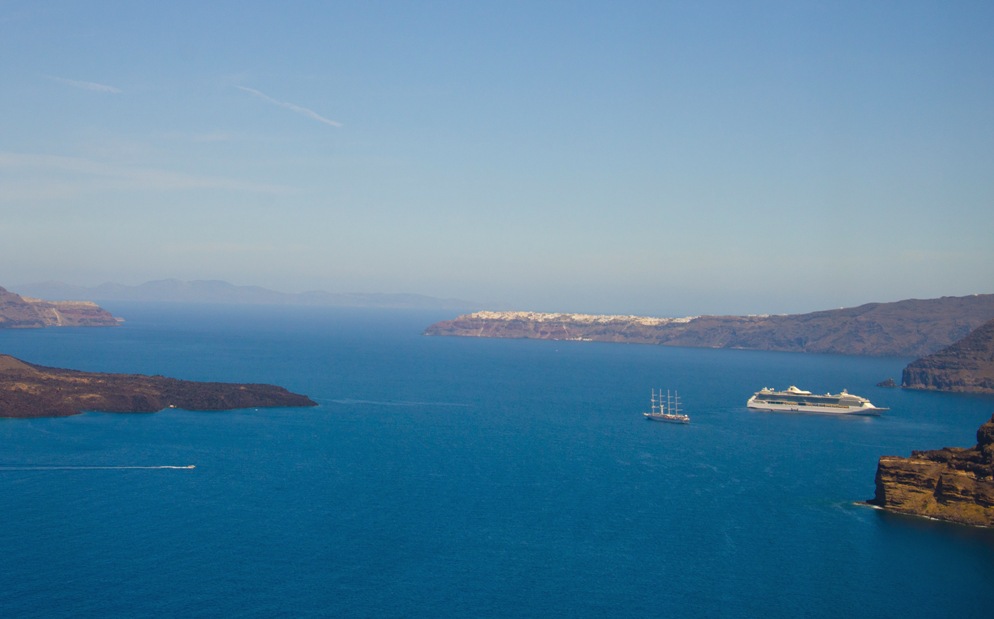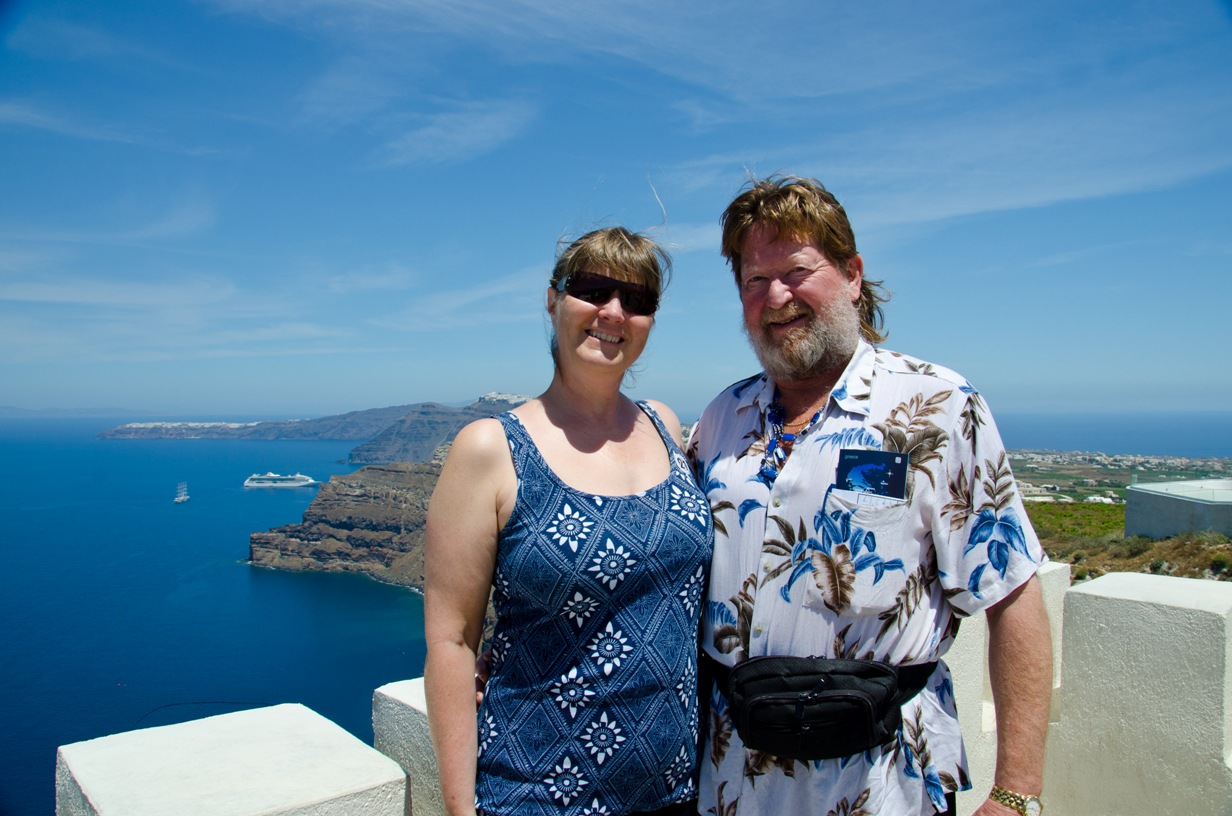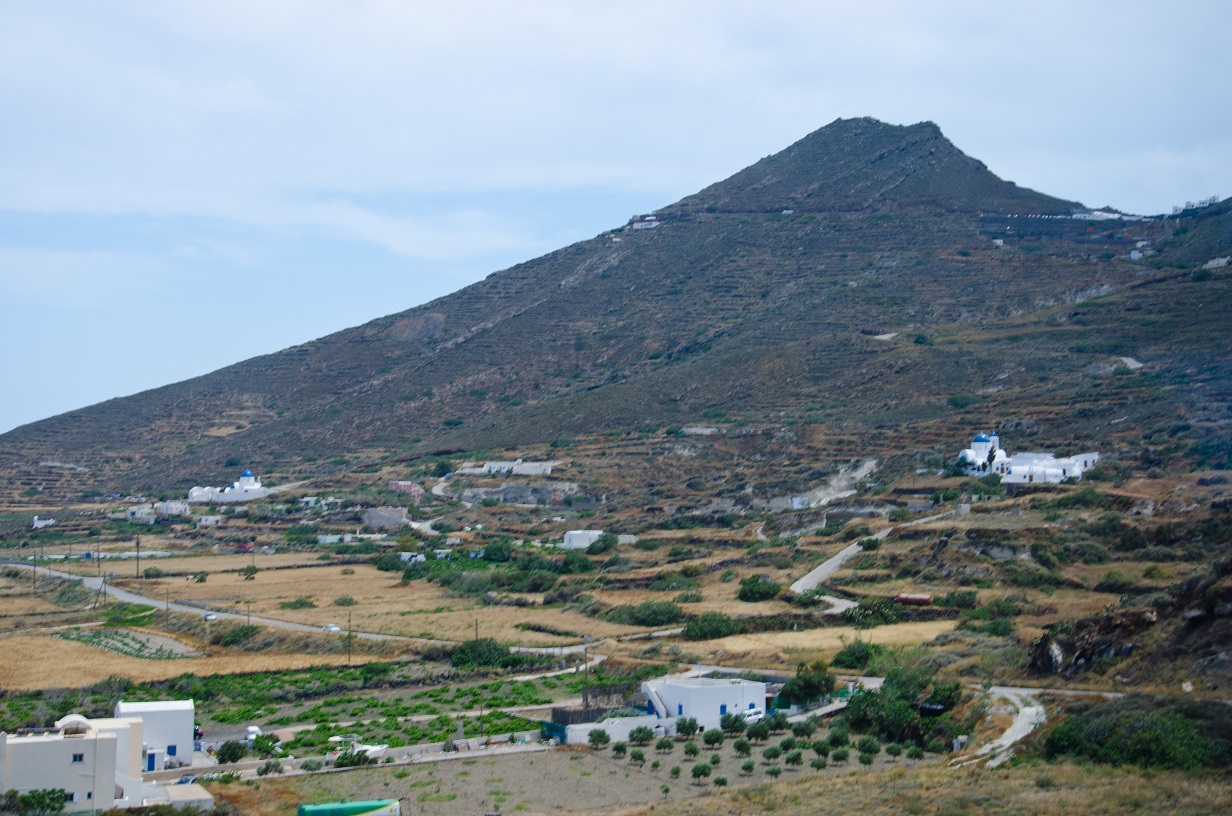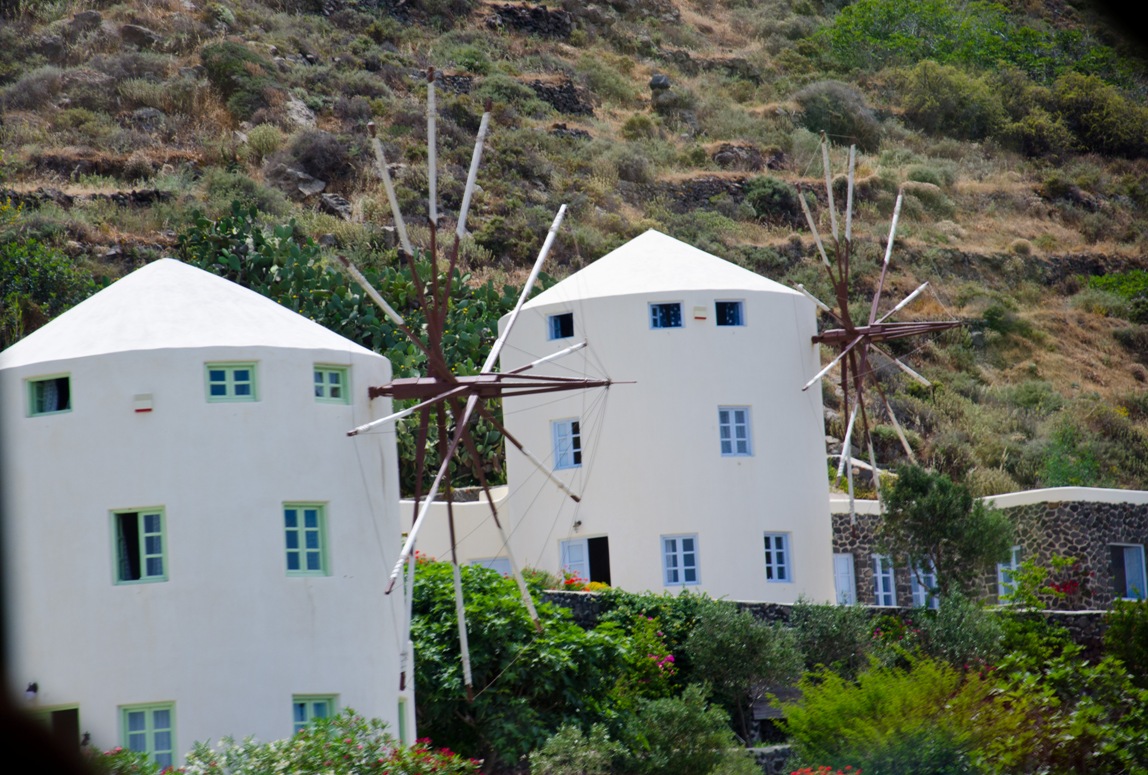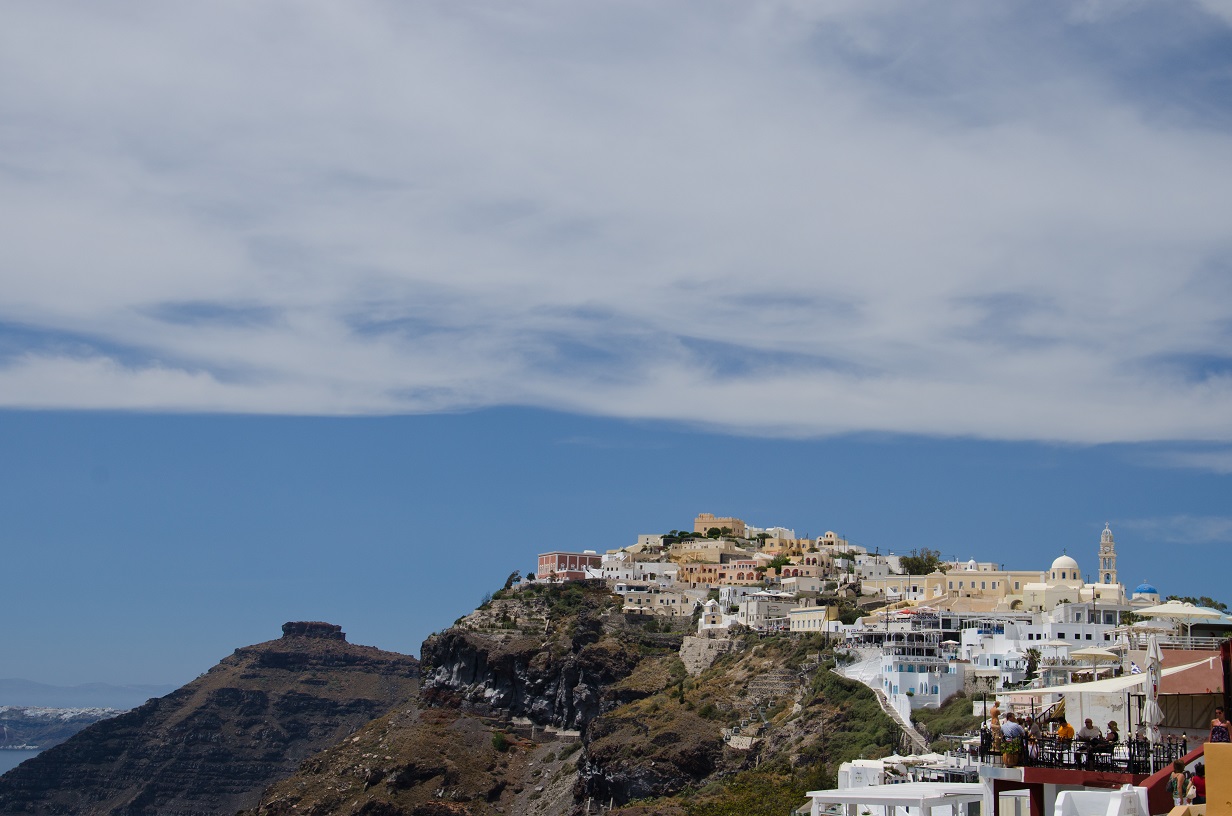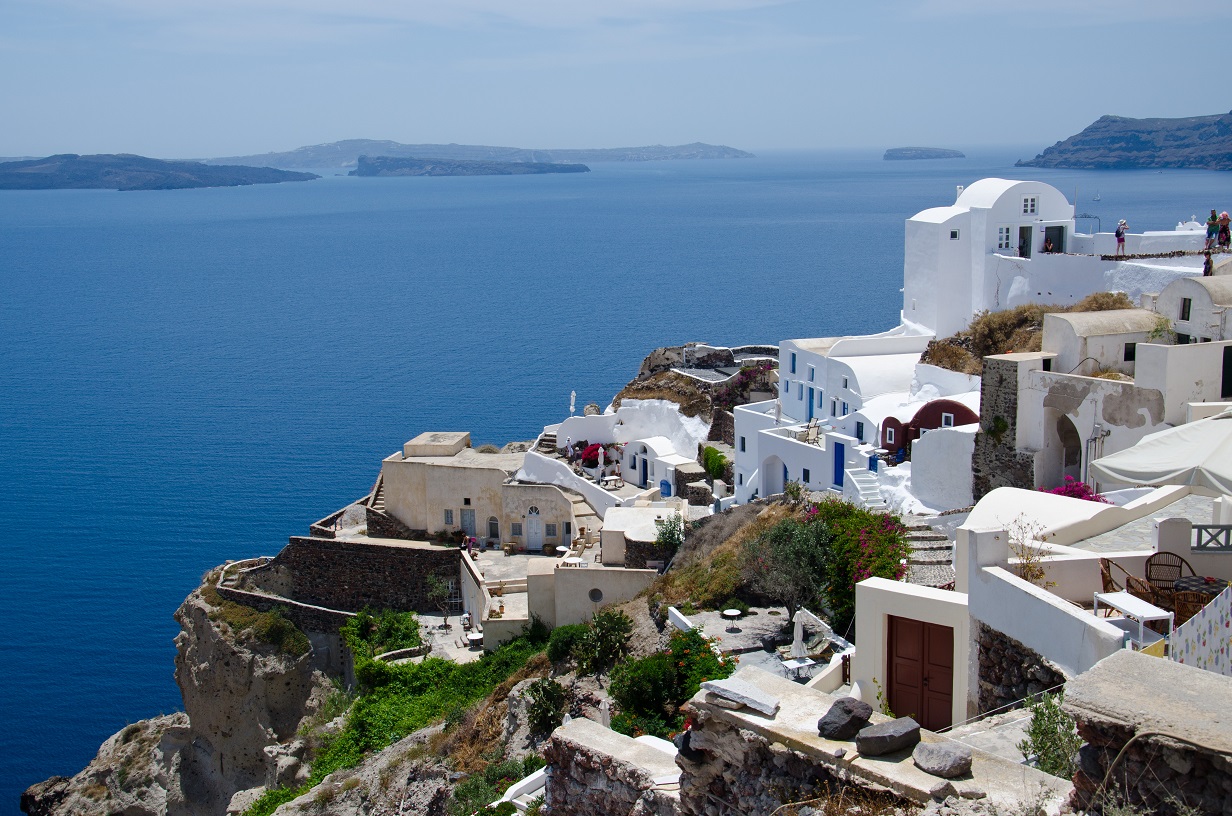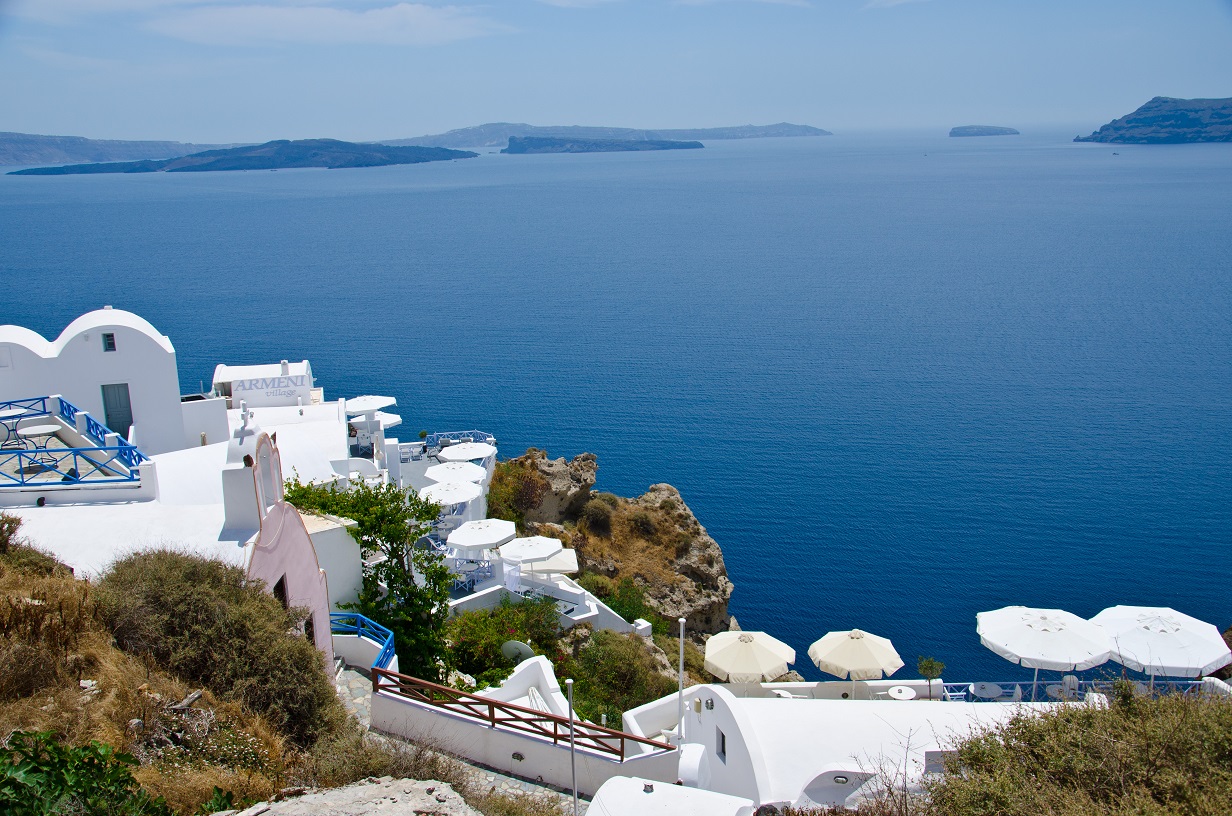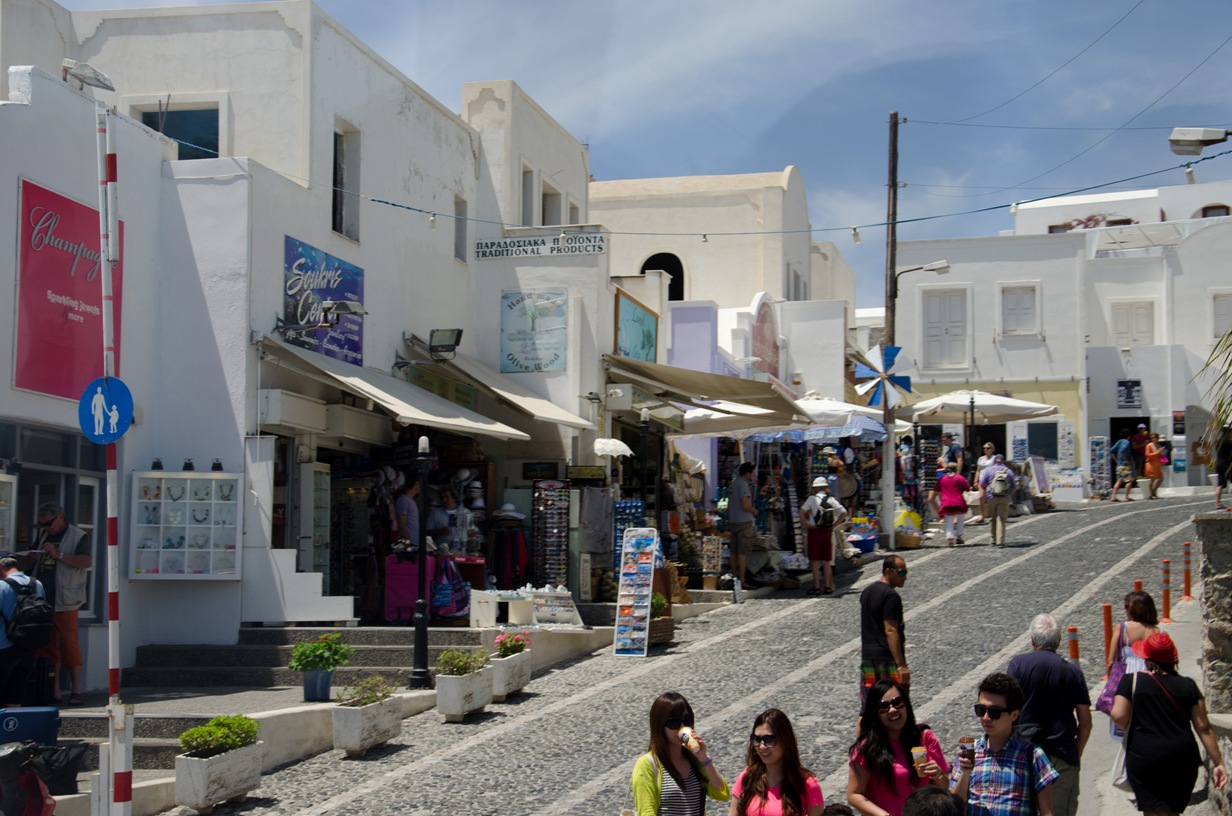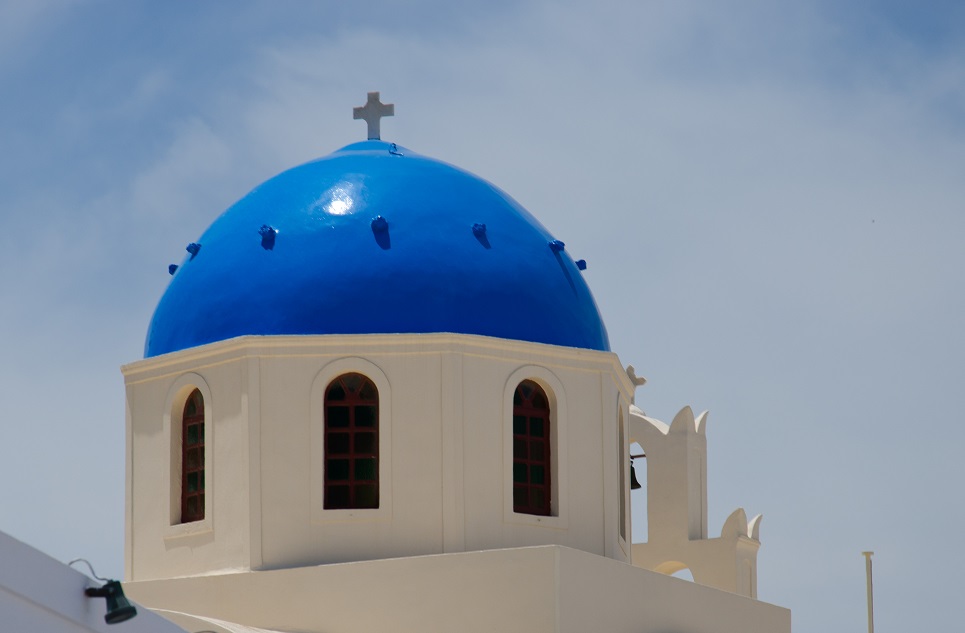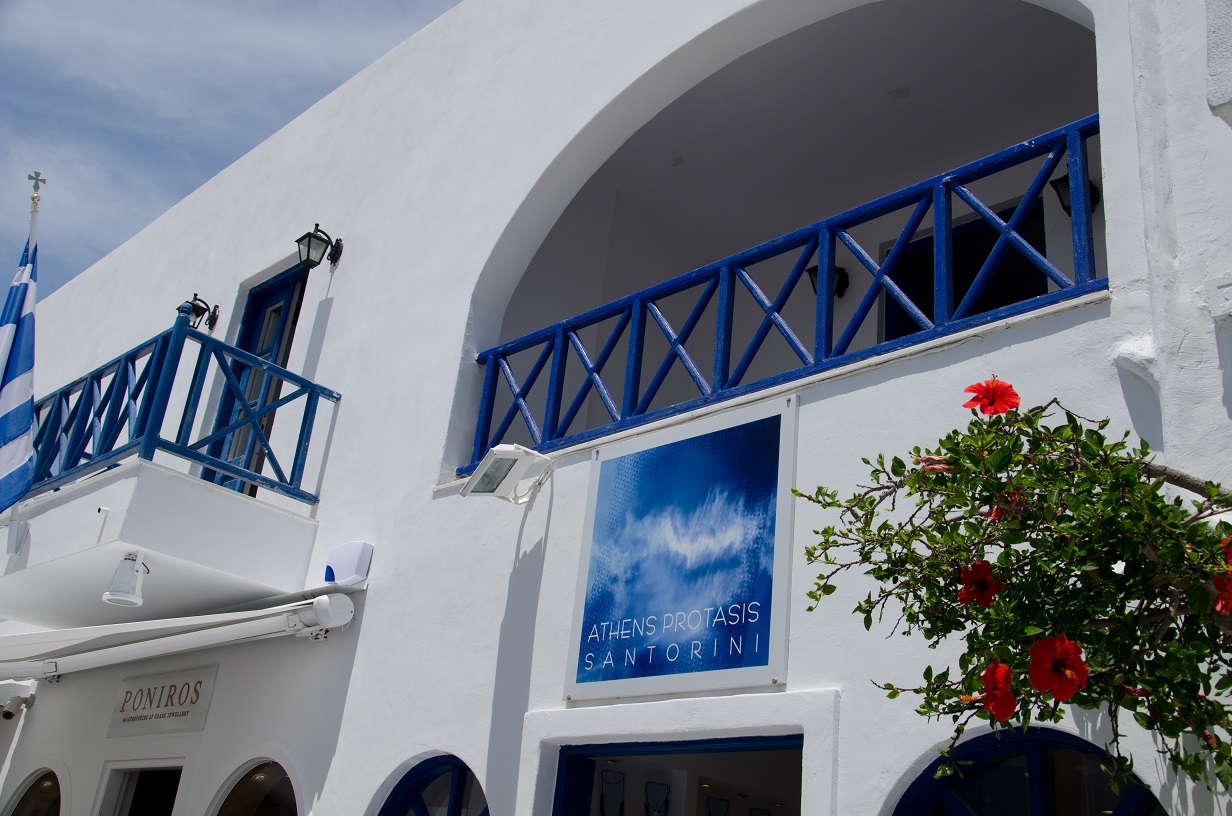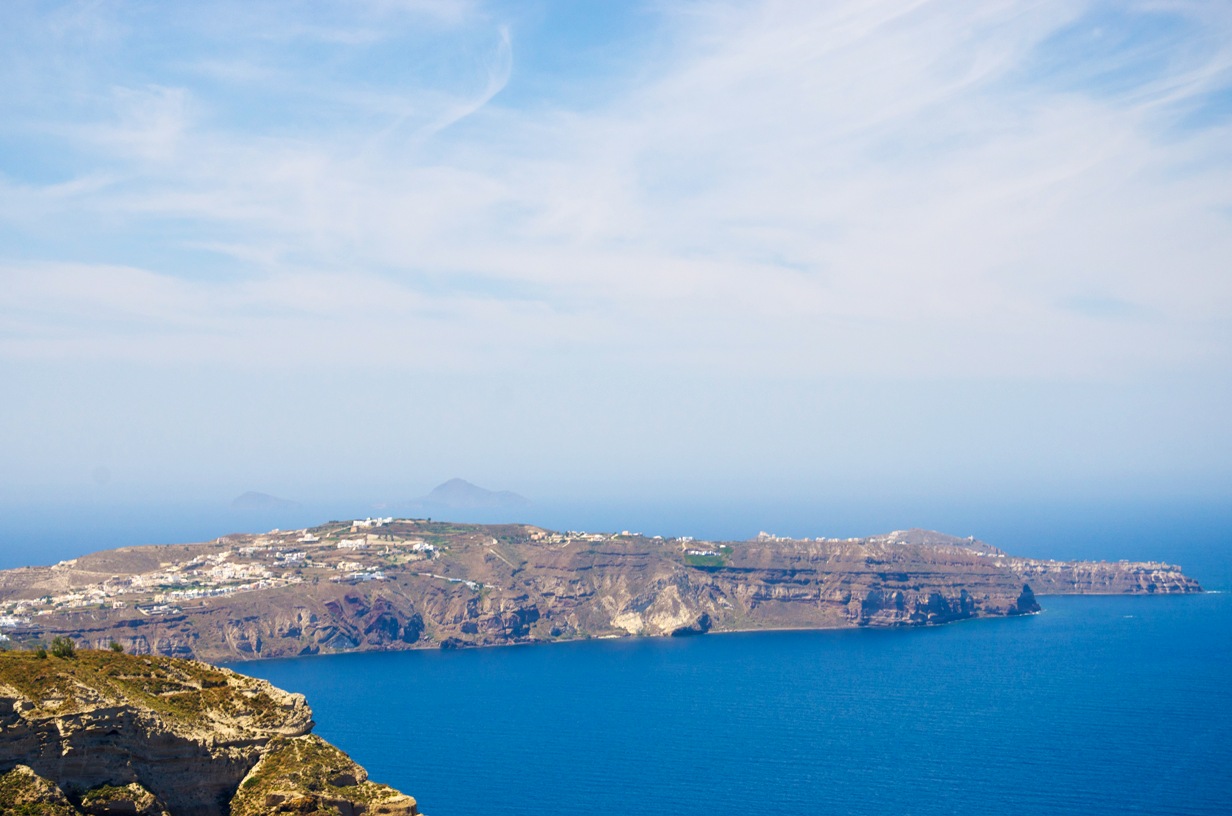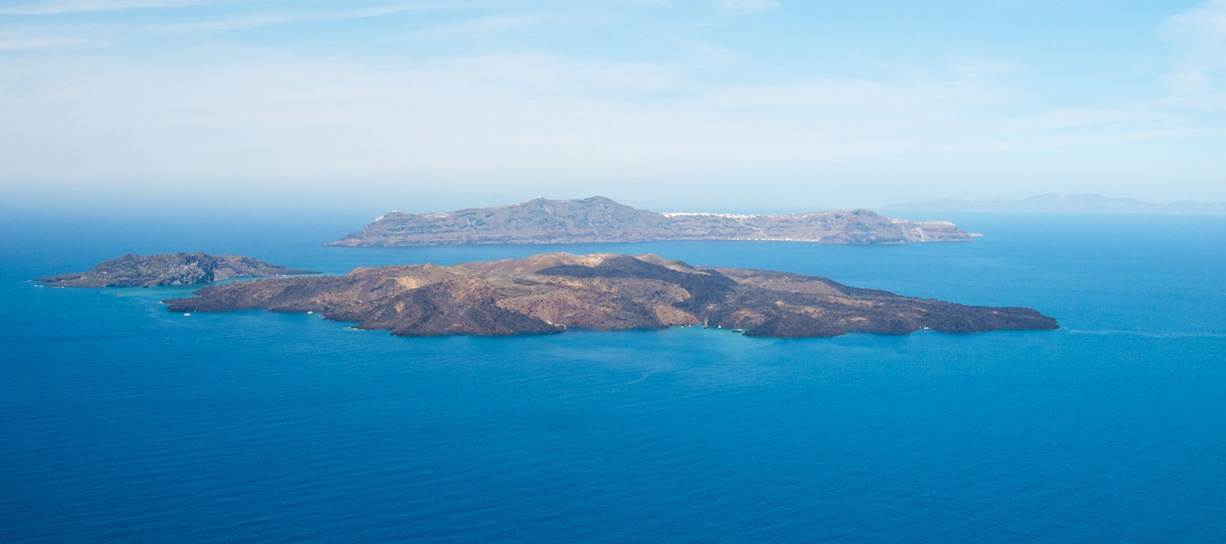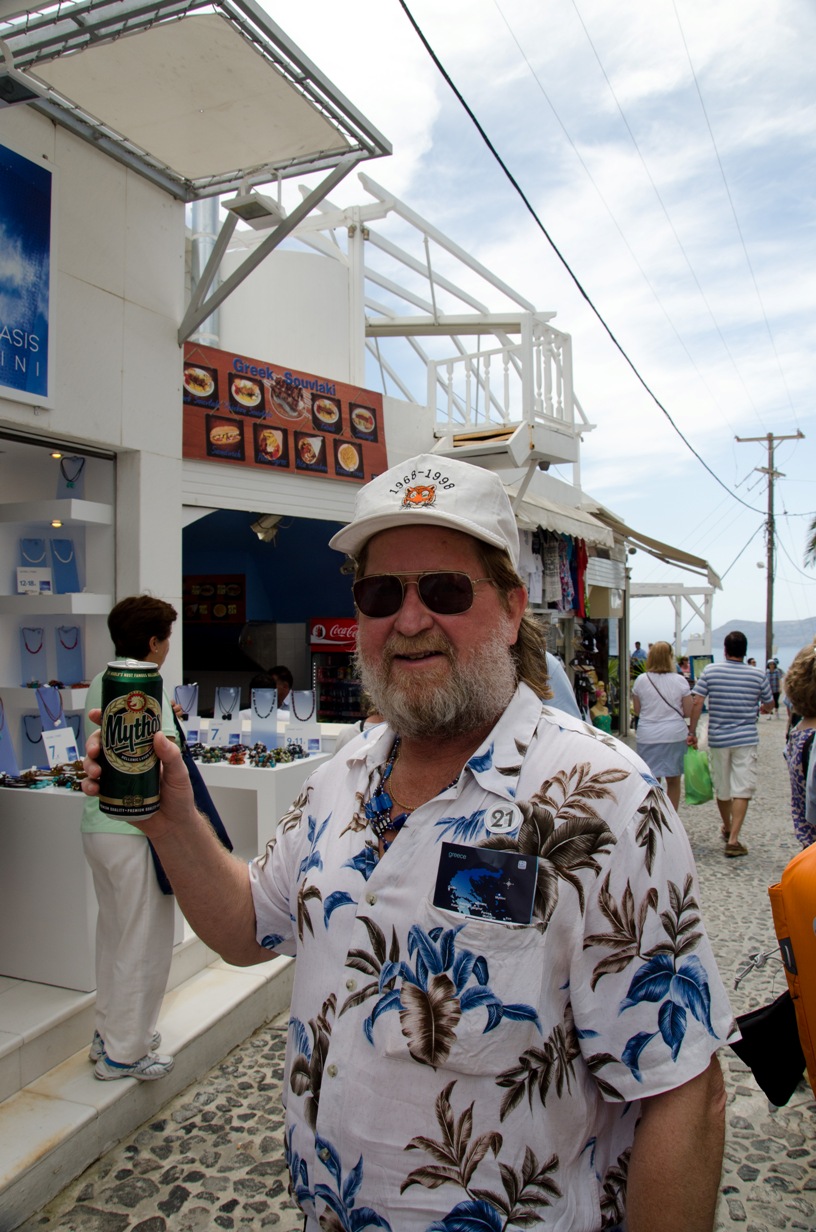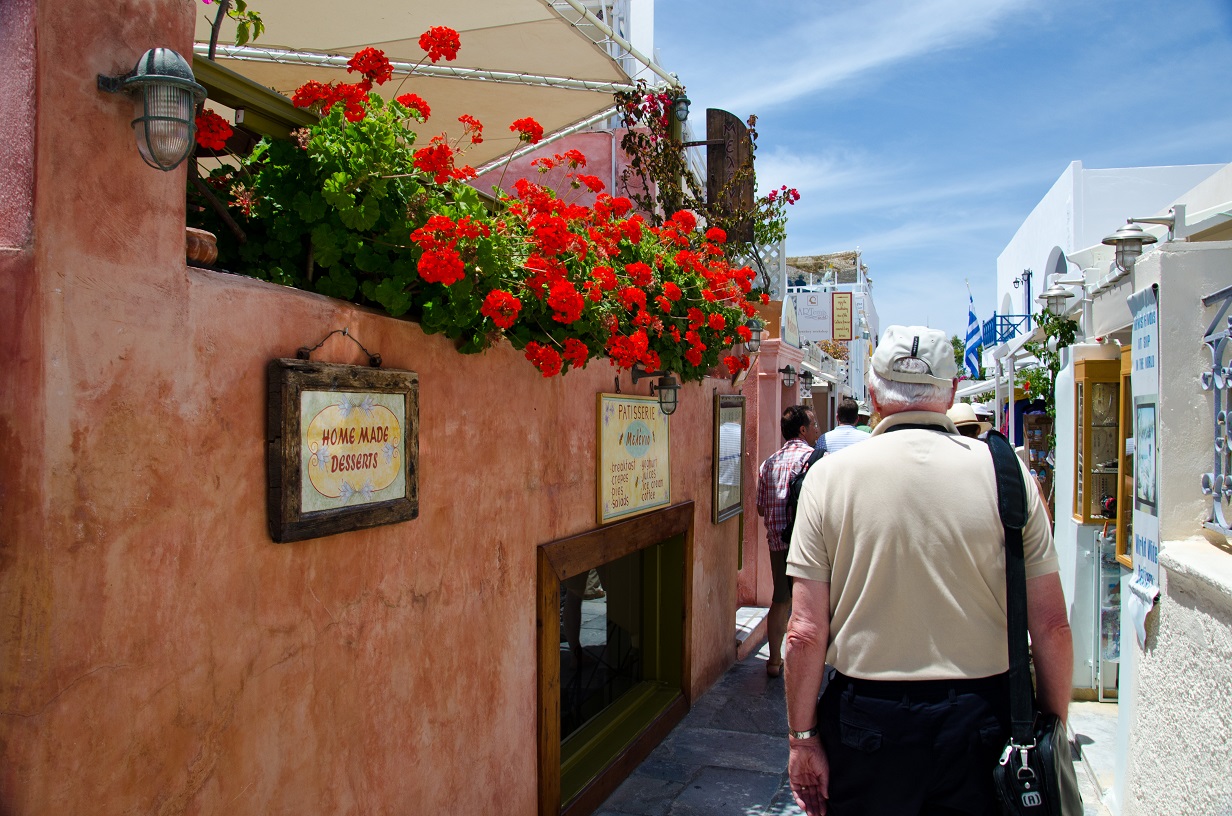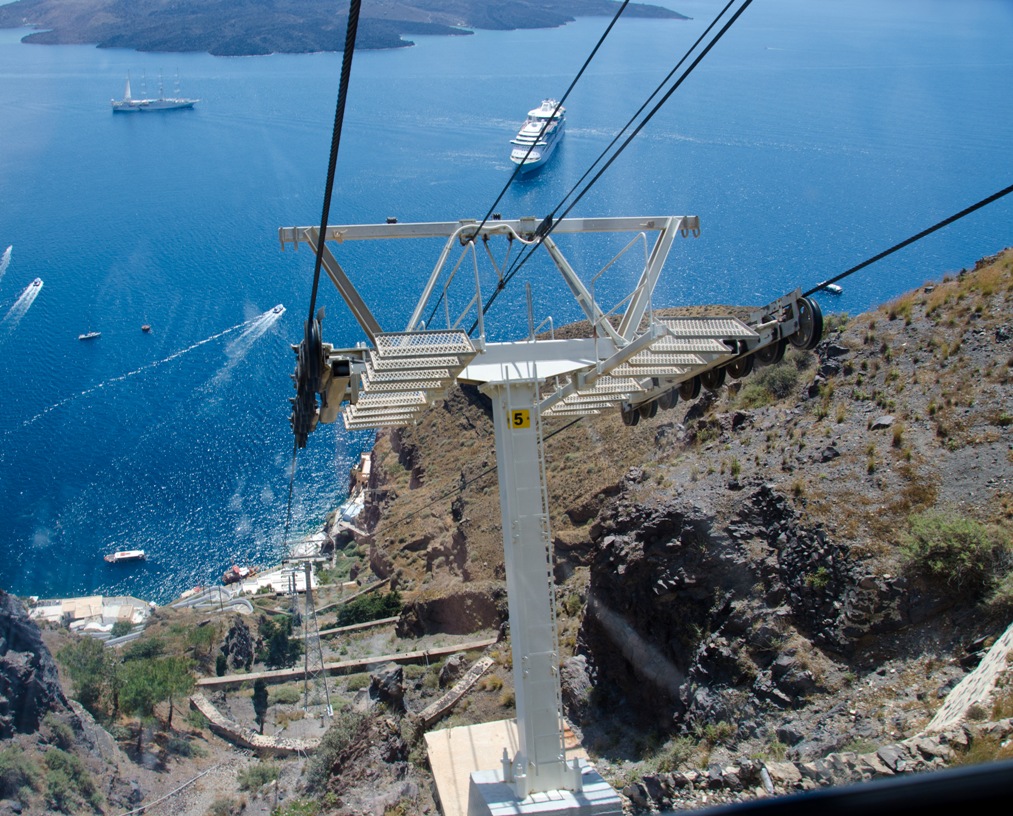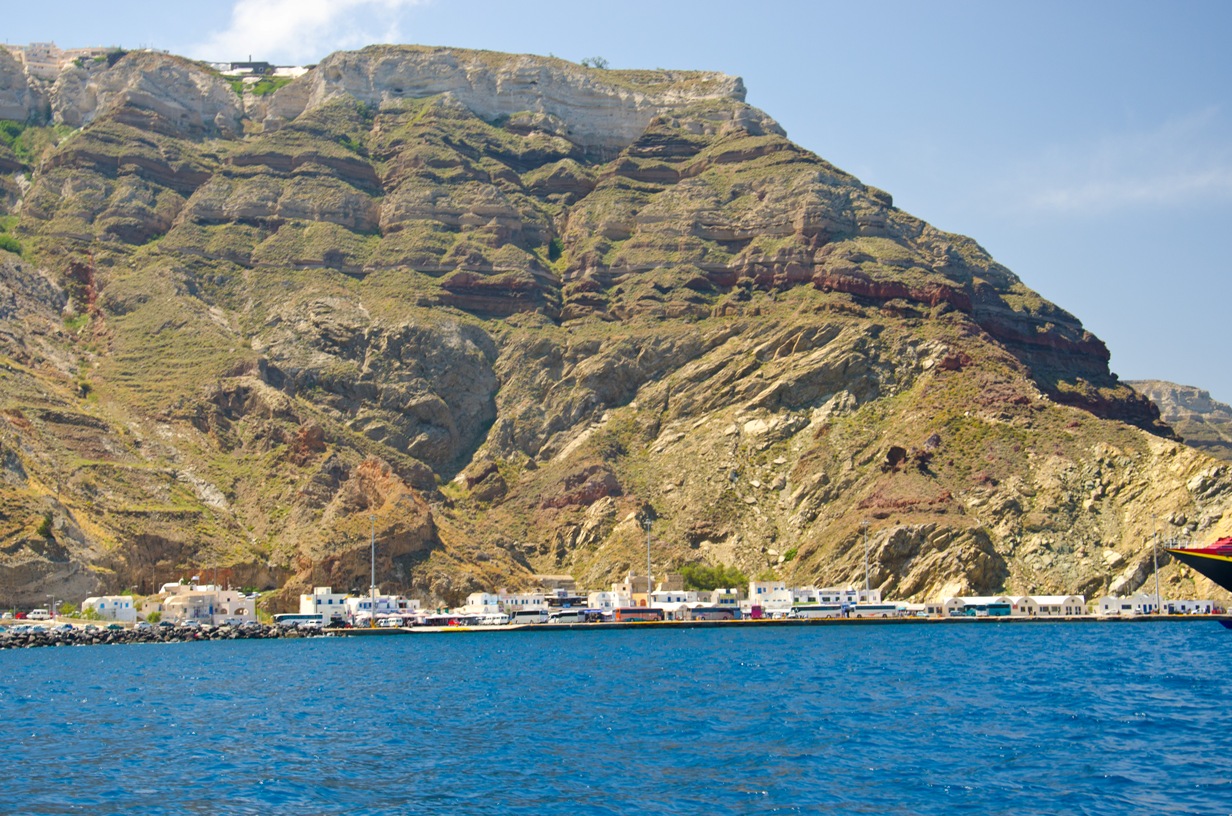
Athinios Ferry Port
Old Port below Pyrgos
Approaching Skala Pier
Pyrgos from sea
Pyrgos from Skala Pier
Private chapel
Fira Winery
North from Fira
South to Pyrgos
Caldera view Oia on horizon
Bruce & Jan - winery terrace
Slopes of Masseria
Wind Power
Faro to Oia
Classic Oia cliff homes
More Oia
Shopping in Oia
Private local chapel
Oia Central
Santorini end-to-end
View from the top
Self Explanatory
Walkway to cable cars
Shortcut to ship
Santorini
Location: 36° 4' N, 25° 4' E Region: Thira Population: 14,500 Length/Width: 18 mi long, 1.5-3.7 mi wide (18 x 2-6km) Area: 73 sq. km (28 sq. mi.) Avg Temp: 50°F - 86°F Climate: Hot Desert Humidity: 44% - 86% Rainfall: 43.0 inches Language: Italian Time Zone: East European (EET) Money: Euro (EU) Commerce: Wine, Tourism Fava Beans Interesting Facts:Santorini is the largest island of a small, circular archipelago in the southern Aegean Sea, about 200 km (120 mi) southeast from mainland Greece.
Saint Irene (Santorini in Greek) is the result of one of the largest volcanic explosions in history -- the Minoean Eruption 3600 years ago. It is what remains of the Eastern edge of a huge caldera that is filled with water and has 2 other islands within its crater.
One side of Santorini is cliffs and bluffs as high as 980 feet. The other side is flat with black sand beaches. Except for one large limestone outcropping at the top, the entire island is of volcanic origin with a thick upper crust of hardened white ash (pumice) that was deposited during the eruption.
The total population is not more than 15,000 and is spread across 13 small villages that dot the island. There over 400 churches and 1000 hotels. Almost all of the churches are private, family churches. One town has 65 churches for its 600 inhabitants.
Most of the original people who lived in the bluffs, resided in caves that were carved out of the lava.
Since the earthquake of 1956 all buildings are whitewashed concrete instead of stone, and no dwelling can have more than 2 stories. Most of the buildings are new (since 1980).
There's a law that construction can only take place during the winter so as not to cause noise during the wine making and tourist season. It also provides jobs for those who perform seasonal summer work. There is no unemployment.
There is little rain and no fresh water on Santorini so they practice dry agriculture. It is so humid that the nutrient rich and very porous lava and pumice readily absorb and retain the moisture, but it is enough for crops to prosper.
Forty varieties of grapes are grown to support the island's wine making industry, but arbors and trellises are not used to support the plants. It is so windy that the vines are coiled in circles close to the ground to prevent damage.
© Copyright 2008 Write Sounds Entertainment, Inc. All Rights Reserved.
